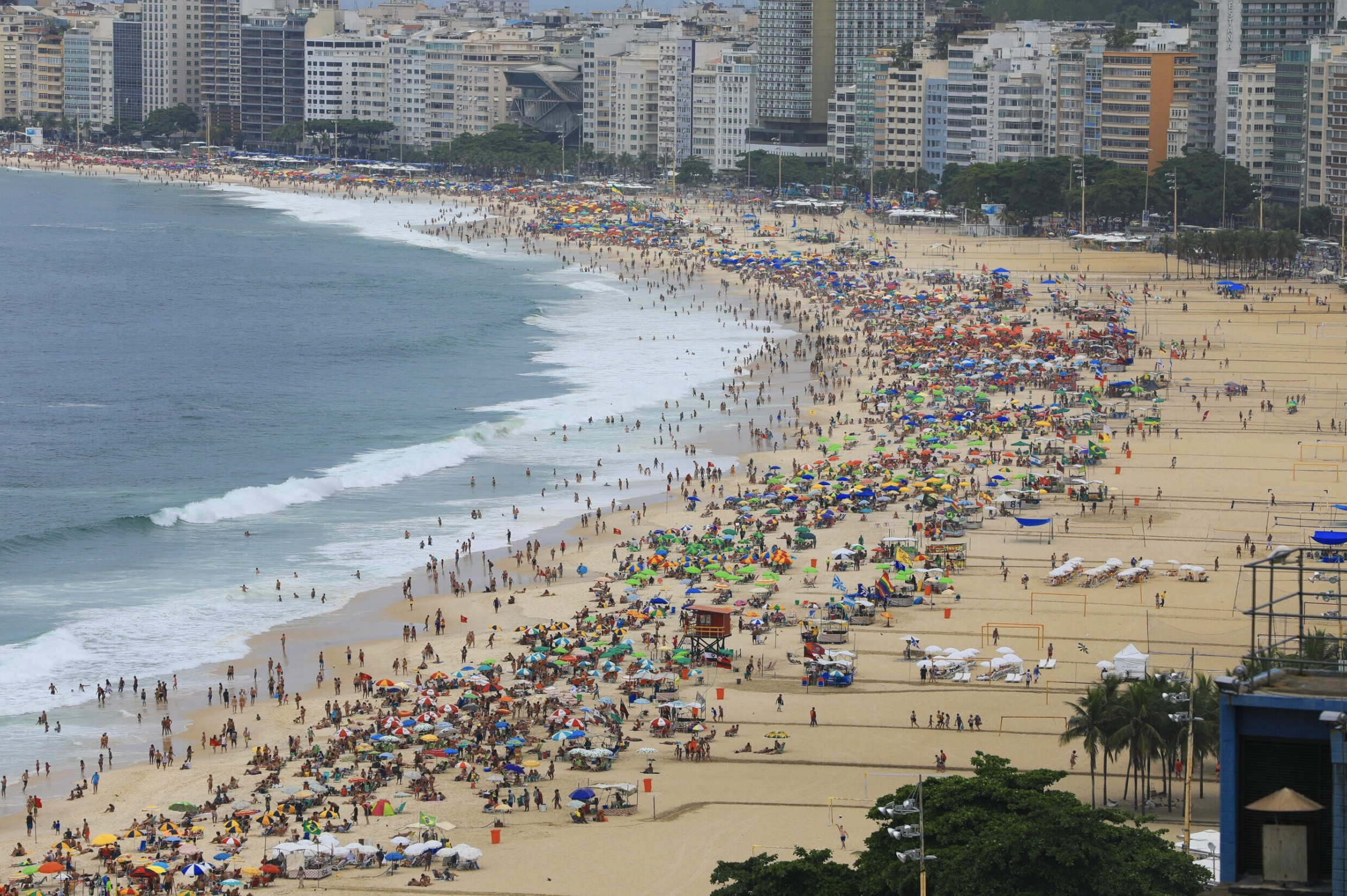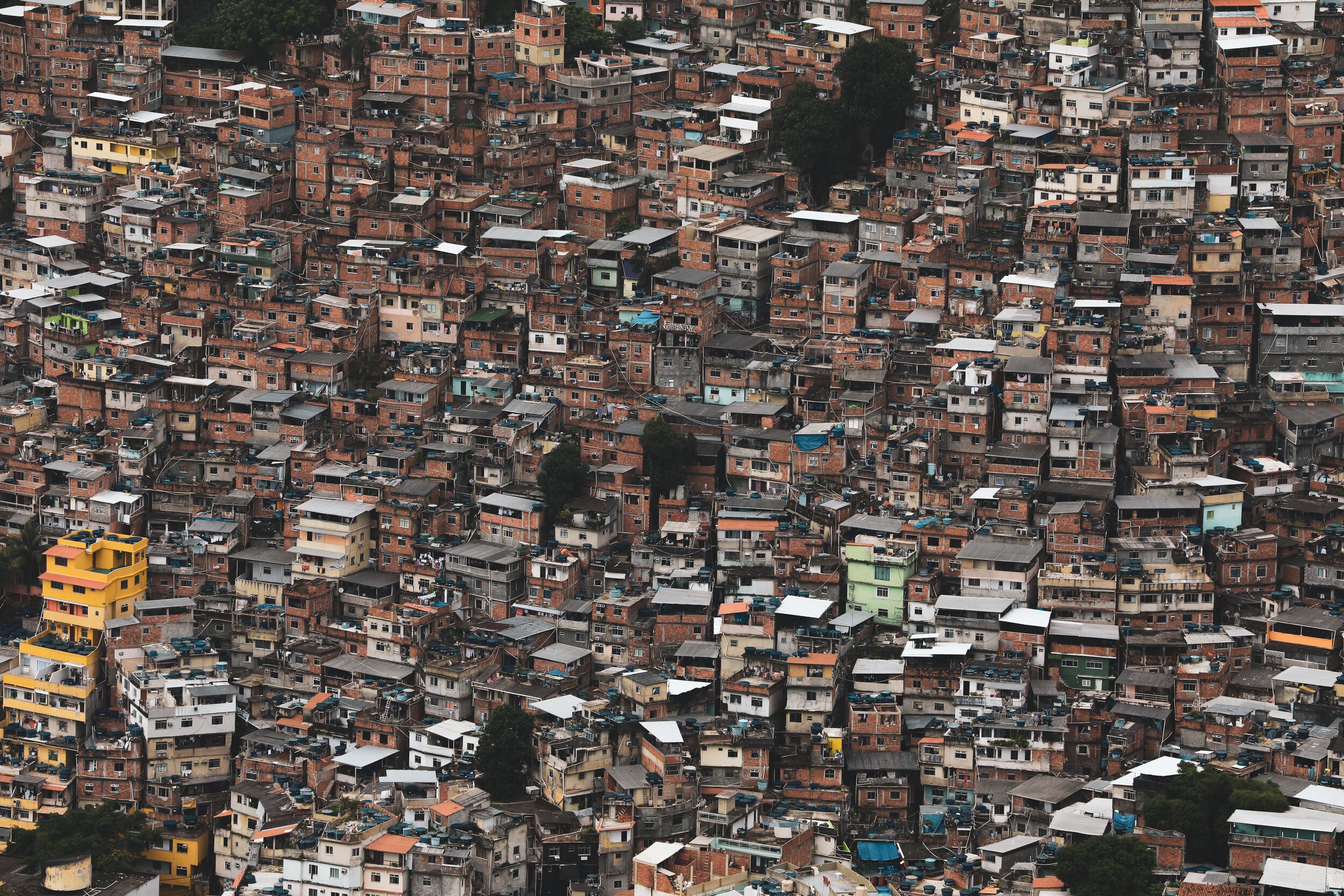Favelas
Favelas are such an iconic staple of the Rio de Janeiro cityscape. There are hundreds of them scattered all across the city.
Origins
The first favelas came into existence sometime in the 19th century, as displaced soldiers and former slaves arrived to Rio, looking for a place to live. Since they could not afford regular housing, they had to build their own, illegally, where they could, over the unoccupied and hostile terrain on Rio’s many hilltops. During the 20th century, more and more people moved from the countryside into the city to take advantage of new opportunities. They too struggled to find a place to live, and so they moved into favelas. These illegal settlements grew and grew, to a point where it was too late for the authorities to do anything, and so these communities became accepted.
That’s why pretty much all the favelas you see in Zona Sul are perched in awkward places on the slope of mountains. They have the best views in Rio! But, while some may look like a prime location today, they were undesirable ground 200 years ago.
Pacification
Favelas have a notorious reputation amongst foreigners and are universally perceived as places no visitor should ever enter - a cautious approach, if a little ignorant. The people living in favelas are not bad people, quite the opposite, and tourists are not public enemy number one either. Just like in any poverty-stricken area, there will be those that might try to take advantage, while others - most - will welcome with open arms. But the real danger of favelas lies elsewhere.
As favelas expanded over the years away from the eyes of the authorities, they became a hotspot for drug trafficking and organised crime. Eventually all favelas were ruled by drug gangs. Their leaders would, of course, be extremely wealthy, but they still chose to live in favelas where they would be able to operate more freely and without attracting unwanted attention.
Because of the criminal activity (drugs, weapons, fights between rival gangs, etc.), favelas pose a danger to inconspicuous outsiders that could become tangled up in those dirty dealings.
However, with the rise of tourism worldwide, Rio de Janeiro quickly gained popularity. Soon it would become the host of major sporting events, such as the the FIFA World Cup (2014) or the Summer Olympics (2016). Authorities had to do something to keep the favelas under control and create a safer city for tourists. UPPs (Pacifying Police Units) were introduced in 2010 and these fought to restore order in favelas and cleanse them of all criminal activity. This led to some serious confrontation, however the movement was successful to some extent and resulted in the pacification of several favelas. Today, all the favelas around Zona Sul are controlled by UPPs, hence why they are considered safe-ish to visit.
It is worth noting that historically favelas were seriously lacking in many departments from infrastructure and electricity to water distribution and sewage. As these areas became more integrated into the city, facilities improved, and while this may seem like a universally good thing, it is not, because it also meant more regulations, higher taxes etc. This worked well for those that could seize the opportunity of starting a small business, but for others it might have done more harm than good.
Good Favelas
Cantagalo, Babilônia, Santa Marta, Vidigal are possibly the safest favelas in Rio. Rocinha, Rio’s largest favela, with around 100,000 inhabitants, is also regarded as pacified and considered relatively safe - however, it’s best to visit this one with a local.
Favelas have a vibrant culture or dancing and music. They are the birthplace of samba after all!
Favelas also have a great sense of community. They were built out of nothing and people helped each other along the way and developed a strong bond. The locals are also known to be warm, friendly and welcoming to outsiders.
Bad Favelas
Complexo do Alemão and Maré are some examples of favelas that really should be avoided. The police has much less power over these areas and even locals avoid them.
However, since most of the ill-famed favelas are found in the northern side of the city, far away from any point of interest, I wouldn’t say that they pose any danger to visitors. The closest you should get to them is when you pass by in a car or bus on the way to/from the airport. There is nothing to see there, and so, any foreigner wanting to visit would just be looking for trouble.
Tourism
People all over the world have developed a curious fascination for the idea of favela, the culture, the lifestyle, and the aesthetic. A way of life that is so different from your own will always create interest. And there is no denying that these box-shaped houses stacked onto and next to each other on the face of a mountain add to the character and landscape of Rio - much more than the dull concrete blocks of Copacabana. From a visual standpoint, favelas create some of the most striking views in Rio.
However, I always have mixed feelings about the ethics of visiting these kind of places. On one hand, I really don’t want to be that ignorant tourist drawing fascination from an impoverished neighbourhood, just for the fun of it. On the other hand, tourism is a great way to support a local community that really needs it the most. I also find that facing the harsh reality in such places is a healthy experience that helps put things into perspective and redefines value.
And so I think that visiting favelas is a good thing, so long as you are careful and respectful. You could stay at one of the guesthouses or enjoy a meal at a hip eatery. Or you could go on a “favela tour” with a local guide, to gain more insight into this different way of life.











Everything you need to know about the Rio Carnival